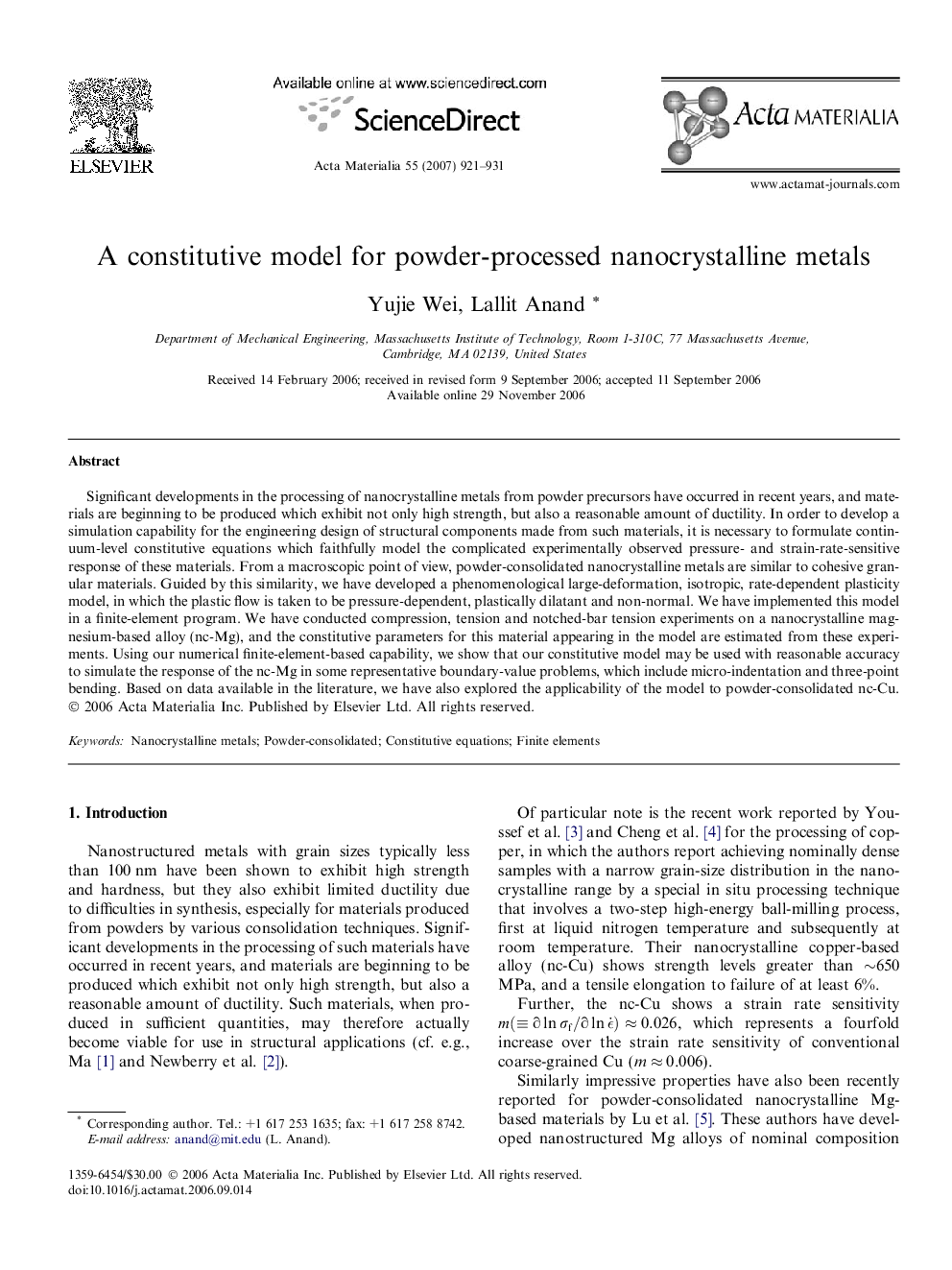| Article ID | Journal | Published Year | Pages | File Type |
|---|---|---|---|---|
| 10620877 | Acta Materialia | 2007 | 11 Pages |
Abstract
Significant developments in the processing of nanocrystalline metals from powder precursors have occurred in recent years, and materials are beginning to be produced which exhibit not only high strength, but also a reasonable amount of ductility. In order to develop a simulation capability for the engineering design of structural components made from such materials, it is necessary to formulate continuum-level constitutive equations which faithfully model the complicated experimentally observed pressure- and strain-rate-sensitive response of these materials. From a macroscopic point of view, powder-consolidated nanocrystalline metals are similar to cohesive granular materials. Guided by this similarity, we have developed a phenomenological large-deformation, isotropic, rate-dependent plasticity model, in which the plastic flow is taken to be pressure-dependent, plastically dilatant and non-normal. We have implemented this model in a finite-element program. We have conducted compression, tension and notched-bar tension experiments on a nanocrystalline magnesium-based alloy (nc-Mg), and the constitutive parameters for this material appearing in the model are estimated from these experiments. Using our numerical finite-element-based capability, we show that our constitutive model may be used with reasonable accuracy to simulate the response of the nc-Mg in some representative boundary-value problems, which include micro-indentation and three-point bending. Based on data available in the literature, we have also explored the applicability of the model to powder-consolidated nc-Cu.
Related Topics
Physical Sciences and Engineering
Materials Science
Ceramics and Composites
Authors
Yujie Wei, Lallit Anand,
